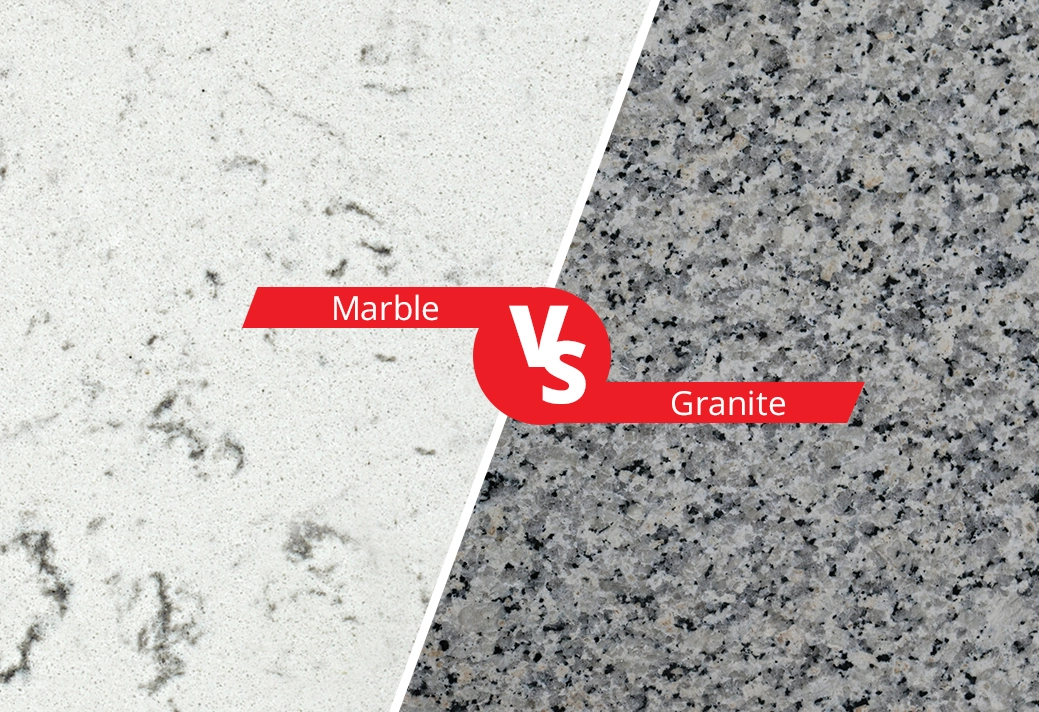While choosing materials for your home design, some of the leading options available out there are granite and marble. These are available as natural stones. However, you can leverage the modern-age composite marble materials to expect better durability and less maintenance. Whether you are planning to install engineered stone or natural materials for your home decor, let us help you understand the differences between marble and granite.
Both marble and granite are naturally-available materials that are quarried directly from the Earth. While both granite and marble feature some points of similarities, there are major differences as well. Your decision of choosing granite or marble will depend on the location of the counters and how you aim at using and maintaining them. For optimum results, you can make use of top-grade composite stones from a leading marble shop like Johnson Marble & Quartz.
Differences Between Marble and Granite
Appearance
The overall physical appearance of granite is quite different from marble. Granite has a wide range of speckled colors that result out of melded stones within its structure -including mica, quartz, feldspar, and even amphibole. Moreover, it is also available in a multitude of tones and shades.
On the other hand, marble is a solid cream or grayish-white colored stone featuring dark veins running all around. In some cases, there can be rare instances of varieties featuring pink or green base color. The lines formed in the stone are due to the presence of impurities like iron oxides and silt. For more variations in colors and textures, you can opt for premium-grade composite marble from Johnson Marble & Quartz.
Properties
Naturally, granite is regarded as a stronger natural stone. However, when you consider installing engineered stone materials like composite marble, it will deliver greater durability than most other natural materials.
Naturally, both marble and granite tend to be porous. Therefore, to avoid the common downfalls associated with natural stone materials, homeowners nowadays prefer installing composite marble or engineered stone materials that are non-porous and heat & stain-resistant.
Applications
The naturally-durable nature of granite makes it a suitable option for both bathroom and kitchen countertops. Most homeowners also make use of granite for flooring applications. On the other hand, marble is utilized more on areas experiencing less traffic like bathrooms. Here, natural marble can be used for installations across floors, shower walls, tub decks, and vanities.
Marble is capable of creating a unique and light look. Moreover, it can be a great choice for surfaces that will not be used much. Both marble and granite are easily found in gravestone markers and sculptures.
Maintenance
As both natural marble and granite tend to be porous, they are capable of absorbing liquids out of spills. At the same time, light-colored stones tend to be more porous than dark-colored stones. Sealants can help in improving and preventing staining while getting etched on both granite and marble. Still, it could be problematic to swipe out common spills from the surface.
In this aspect, most homeowners nowadays have started installing top-quality composite marble or engineered stone materials that are non-porous and stain-resistant.
Stain Removal
Whether or not a stain can be removed will depend on whether any deep or permanent damage has been done to the surface. Some stains tend to be superficial and can be easily removed with the help of a stain remover.
There are other stains that might seep down into the pores of the stone while leading to permanent changes to the chemical makeup of the stone. If you are worried about stains, then you can opt for composite marble that is artificially designed to be stain-resistant. As engineered stones are non-porous, there is no danger of moisture seeping in or stains forming.
Health Risks
Some granite surfaces might feature trace elements of naturally-occurring, radioactive thorium, uranium, and radium. Over time, the given elements can end up decaying and emitting radon -a noble gas, at higher enough levels, can lead to even lung cancer.
If you are concerned about the overall health issues, you can think of installing composite marble or engineered stone materials to remain worry-free about potential health issues.
Safe Cleaning
You can think of cleaning sealed granite countertops regularly with the help of plain soapy water to keep the overall surfaces clean as well as glamorous. You should rinse away the soap completely.
Natural marble surfaces will require more in-depth cleaning. It will help in avoiding damage to the porous stone. You can think of using a cleaning product featuring neutral pH to minimize discoloring the marble. Ultimately, it will dull the overall finish.
Environmental Considerations
Neither natural marble nor granite is eco-friendly. While both natural surfaces might last for a longer period when taken care of properly, considerable amounts of energy and fuel are initially essential to cut, mine, transport, and install the stones.
If you are looking for an eco-friendly option, you can think of using composite marble or engineered stone materials. These are manufactured artificially within dedicated facilities with the help of state-of-the-art mechanisms. Therefore, no harm is done to the environment in the production of composite or artificial marble.
Conclusion
Both marble and granite surfaces are beautiful and are used for designing stylish countertops, wall cladding, backsplashes, floor coverings, and so more. They are both unique natural stones and can represent a major investment. If you are looking for something more premium, you can opt for top-grade composite marble and engineered stone to be assured of great outcomes for your house decor.


